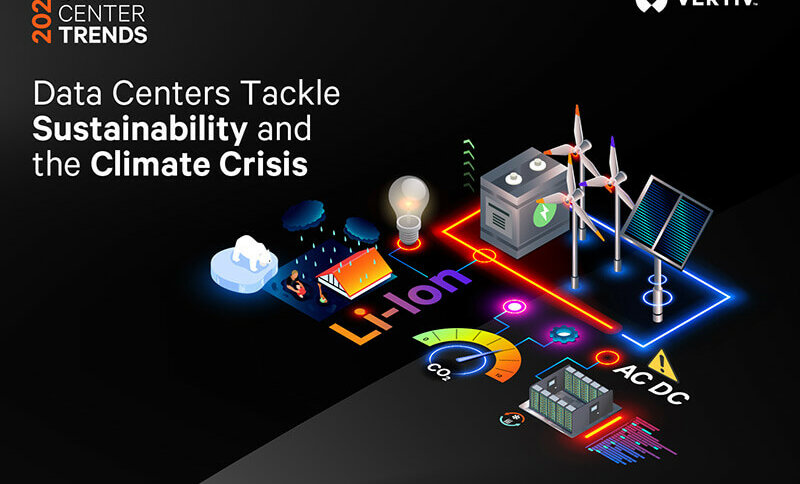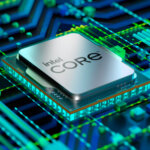Sustainability a key focus for data centers in 2022

Data centers in 2022 will continue to be critical to organizations’ digital operations. Over the years, the technologies in data centers continue to see innovations in various areas. Most data center providers have improved their cooling systems and developed new UPS that can be incorporated in data centers.
At the same time, with climate change issues and sustainability key areas to be focused on by organizations, many are pledging to move towards sustainable data centers in the future. There is no denying that data centers will only increase in the years to come, and organizations want to ensure they can build data centers that can address sustainability and navigate the climate crisis.
As such, Vertiv, a global provider of critical digital infrastructure and continuity solutions, released its annual list of the key trends for data centers in 2022. Vertiv experts see long-held conversations around efficiency and utilization in the data center evolving, to reflect a more comprehensive and aggressive focus on sustainability. This movement recognizes the urgency of the climate crisis, the relationship between resource availability and rising costs, and shifting political winds around the world.
According to Rob Johnson, Vertiv CEO, in 2022, data center operators and suppliers will actively pursue strategies that can make a real difference in addressing the climate crisis.
“For our part, we continue to focus on energy efficiency across our portfolio, as well as alternative and renewable energy technologies and zero-carbon energy sources, to prioritize water-free cooling technologies, and to partner with research leaders and our customers to focus on impactful sustainability efforts,” said Johnson.
Some of the key data center trends organizations will look at in 2022 include:
Tackling Sustainability and the Climate Crisis – On the operational front, Vertiv experts predict some organizations will embrace sustainable energy strategies that utilize a digital solution that matches energy use with 100% renewable energy and ultimately operates on 24/7 sustainable energy.
Such hybrid distributed energy systems can provide both AC and DC power, which adds options to improve efficiencies and eventually allows data centers to operate carbon-free. Fuel cells, renewable assets, and long-duration energy storage systems, including battery energy storage systems (BESS) and lithium-ion batteries, all will play a vital role in providing sustainable, resilient, and reliable outcomes. Thermal systems that use zero water are in demand, and we will see refrigerants with high global warming potential (GWP) phased down in favor of low-GWP refrigerants.
Optimizing performance with Artificial Intelligence – With the metaverse expected to make headlines most of 2022, the need for real-time computing and decision-making becomes more critical. This real-time need is sensitive to latencies, and under the increasingly common hybrid working model employed by enterprises, public and private clouds, colocation, and edge computing, full-time manual management is impractical, if not impossible. Artificial intelligence (AI) and machine learning will be critical to optimizing the performance of these networks.
However, it is important to note that the increase in AI will unavoidably increase computing and heat densities and, by extension, accelerate the adoption of liquid cooling. Among other challenges, lowering the barrier to entry places a premium on choosing the right vendors, platforms, and systems to trust.
Post-Pandemic Data Center Takes Shape – A study by Cushman & Wakefield showed that some 2.9 gigawatts worth of new data center construction is underway globally. These data centers will be the first built specifically to meet the needs of a post-COVID world. More activity will be focused at the edge, where VMware projects a dramatic shift in workload distribution, from 5% currently to 30% over the next five years.
Availability will remain the top priority, even at the edge, but lower latency is a rising need to support healthy buildings, smart cities, distributed energy resources, and 5G. 2022 will see increased investment in the edge to support this new normal (remote work, increased reliance on e-commerce and telehealth, video streaming) and the continuing rollout of 5G.
Drive Toward Integration – Various data center equipment providers have been embracing integrated systems that allow for modular capacity additions for years, with integrated racks and rows among today’s more well-known data center offerings. In 2022, Vertiv predicts to see the next step in integration as data centers work with providers to better integrate larger systems – all components of the power infrastructure, for example – and deliver seamless interoperability.
With that said, data centers in 2022 will surely be aiming to achieve the sustainability and energy efficiency aims set by organizations. While there will be challenges in some areas, the reality is, having a sustainable data center will not only be cost-saving in the long run but also improve an organization’s image globally.









